This article was co-authored by Patricia Ladis PT, CBBA. Patricia Ladis PT, CBBA is a Licensed Physical Therapist and the Founder of WiseBody Physical Therapy out of New York, NY. With over 22 years of experience, Patricia specializes in providing a collaborative and holistic approach to pain, including nerve and chronic pain, injury prevention, and prenatal/postpartum wellness. She holds a BS in Physical Therapy from New York University. Patricia is a Certified Behavioral Breathing Analyst (CBBA) and holds certifications in Kinetic Control’s Performance Matrix Assessment Screen and the Integrative Systems Model. She co-founded First 1000 Days of Wellness, an educational platform for practitioners and the public to improve perinatal wellness. Patricia has been featured in Forbes, Vogue, and Men’s Health and has made television appearances on NBC and CBS.
There are 18 references cited in this article, which can be found at the bottom of the page.
This article has been viewed 256,387 times.
Progressive muscle relaxation is a systematic technique for managing stress and achieving a deep state of relaxation, originally developed by Dr. Edmund Jacobson in the 1920s. Tensing and then releasing various muscle groups throughout the body relaxes you and has a host of beneficial effects, from helping you to sleep, to lowering pain during childbirth, to reducing anxiety and depression, to easing headaches, stomach aches, and fatigue.[1] It may even help you quit smoking by reducing cravings![2] For maximum benefit, you'll want to practice a form of progressive muscle relaxation that includes guided imagery and deep breathing.
Steps
Getting Ready
-
1Choose a time when you are not too sleepy. Though progressive relaxation can be used to relieve stress at night and aid in sleep, the goal is typically to learn to relax while still awake. You don't want to nod off in the middle of your session.[3]
-
2Wear comfortable clothes and take off your shoes. Loose-fitting clothes are best; don't wear anything too tight, as this will limit your movement. And don't forget to take off your shoes so you can properly tense and relax your feet.[4]Advertisement
-
3Have a blanket ready. Often, when people are very relaxed they become chilly. Have a blanket or sheet nearby that you can drape over yourself if you get cold. The warmth will help you to relax.[5]
-
4Find a quiet place. You will want to find a space where no interruptions or sudden noises will interrupt your relaxed state. A small, uncluttered space in your home is ideal. Dim the lights if possible to create a soothing atmosphere.[6]
- You may want to try putting on a relaxing music track of nature sounds, bells or chimes, wind in the trees or ocean waves. A music track can also help with drowning out ambient noises you can't control.
- Some people also like to burn incense or scented candles during the session to control the smell surroundings.
-
5Make sure you will not be interrupted. A full session will take 10-15 minutes. Turn off your cell phone or pager. If you have a landline, turn off the ringer. Ask your family not to interrupt you during your session.
-
6Get into a comfortable position. You can perform progressive relaxation standing, sitting, or lying down. Sitting in a reclining armchair is ideal, as it allows you to relax more than if you were standing, but you are also less likely to fall asleep than if you were lying on your back.[7] Once in position, close your eyes, uncross your legs, and let your hands rest comfortably at your sides or on your lap.
- Many people find it easy to start by lying on your back with pillows under your calves, and knees bent at a 90-degree angle.[8]
-
7End your preparation with 5 deep breaths. Deep breathing has been shown to help trigger the body's natural relaxation response, typified by lower blood pressure and a feeling of relaxation and wellbeing.[9] [10] Take a deep breath, hold it for four seconds, and relax as you let it out. Pay attention to how your abdomen rises and falls with each breath. After 5 deep breaths, you are ready to begin.[11]
Mastering the Basic Technique
-
1Breathe in as you tense. Work with one specific part of your body at a time. Take a deep, slow breath through your nose as you squeeze the muscles for 5 seconds. The key is to tense the muscles as hard as you can without hurting yourself.[12]
-
2Relax the tensed muscles as your breathe out. Exhale slowly through your mouth as you quickly relax, letting all tension flow out of the muscles. Focus on the now relaxed muscles; they should be loose and limp.[13]
-
3Relax for 10 seconds before moving to the next muscle group. Don't move too fast. It will help to relax your body if you go slowly and deliberately, taking time between each tension-relaxation step. While relaxing, breathe slowly and evenly.[14]
-
4Incorporate imagery. Warmth is associated with relaxation. You can increase your level of relaxation by imagining the warm rays of the sun shining on the part of your body that you are focusing on. In addition, you can imagine yourself in a safe, relaxing place before or after you start your session (see Adding Guided Imagery below).[15]
-
5Repeat these steps until you have relaxed your entire body. You can start with your head and move down, or with your feet and move up.
- If a set of muscles is still tense, you may want to repeat the tense and relax cycle again before moving on to the next set of muscles.
- You may also find it more effective to tense one side of the body then the other. For a quicker relaxation session, tense them both at the same time.[16]
Relaxing From Toes to Scalp
-
1Start with your feet and toes. Breathe deeply through your nose as you curl your toes down and tense the soles of your feet. Hold for five seconds and then release. Feel the tension flow out of your feet. Pay particular attention to how different your feet feel when relaxed as opposed to tensed. Relax for 10 seconds before moving on to your legs.[17]
-
2Move on to your legs. Tense and relax your legs, first one muscle group at a time, then all together. Don't forget to breathe in through your nose as you tense, and out though your mouth as you relax. Move in the following sequence:[18]
- Calf muscles – Point your toes up towards your knees.
- Thighs (middle and inner) – If seated or standing, push your heels down onto the floor. If lying down, try to straighten your legs.
- Thighs (inner) – Press your knees together as if you were holding a sheet of paper between them.[19]
- Buttocks – Tighten the muscles by squeezing your buttocks together.
- Entire legs – Tighten all the muscles in your legs together.
-
3Relax your core. Keep your breathing even as you progress to your stomach and back. Remember to pause for 10 seconds between each cycle of tensing and relaxing.[20]
- Stomach – Imagine you are trying to touch your belly button to your spine.
- Lower back – Arch your back as you tighten the muscles just above your buttocks.
-
4Focus on your upper back and chest. By now, you should be feeling very relaxed. Your breathing should be slow and steady. Remember to hold the tension for 5 seconds before you relax.[21]
- Chest – Take a deep breath and hold it to tense your chest.
- Upper back – Pull your shoulder blades back as if you were trying to touch them together.
-
5Concentrate on your shoulders and neck. Lift your shoulders up as if you were trying to touch your ears.[22] As you do so, tilt you head back slightly to increase the tension in your neck. Tension in your neck and shoulders is a frequent cause of both headaches and neck pain.[23] [24] You may want to do two or even three cycles to make sure you completely relax your neck and shoulders.
-
6Work on your arms. It should be getting easier and easier to relax as your body calms down. As you relax each part of your arms in succession, remember to breathe in through your nose when tensing and out through your mouth as you relax.
-
7Finish by relaxing the muscles of your face. People carry a lot of tension in their face, particularly in their jaw muscles. As you relax these muscles, you will complete your session. You should now be completely relaxed.
-
8Relax. Now that you have completed the progressive muscle relaxation process, take a few minutes to simply relax. You may choose to engage in guided imagery in order to further enjoy the sense of relaxing calm. Or, if you have time, you may wish to go to sleep.
Adding Guided Imagery
-
1Use imagery to increase the benefits of progressive relaxation. Tensing and relaxing your muscles can help drive the tension from your body. You can then gain added benefits by using guided imagery to relax your mind. This practice has been shown to positively effect mood, and to reduce anxiety and fatigue.[33]
- You can use imagery along with deep breathing before you start to put yourself in a relaxed state.
- Alternately, you can wait until you are relaxed and then imagine yourself in a safe, relaxing space to increase your sense of relaxation.
-
2Choose your safe place. Think of a real or imagined place where you feel safe, calm, and happy. There is no "wrong" place. It is, however, best to stick with a place once you choose it, as this makes reaching a relaxed state easier.[34] Common safe places include:
- A beach
- The woods
- A mountaintop
- A sunny park
- A spot you visited on vacation
- Your favorite room in your house, past or present
-
3Imagine yourself in your safe place. Feel the calmness as you imagine each detail. Use all of your senses, not just sight. For example, if your safe place were a sunny meadow, you might concentrate on:[35]
- The colors – the green of the grass, the pure blue of the sky
- The sounds – the buzz of bees, the trill of birdsong, the whistle of the wind in the grass
- The sensations – the wind on your skin, the warm sun on your face, the grass under your arms
- Smells – the clean air with a hint of grass and wildflowers
-
4Allow the calm to drive away all thought. When thoughts do arise, don't fight them. Gently return your focus to the details of the calm, relaxing space.
- If you have difficulty ridding yourself of a thought, imagine putting an image of it on a TV screen, then use a remote control to turn it off.[36]
- You can also imagine putting the image in a drawer and closing the drawer.
-
5Enjoy the peacefulness. You are completely relaxed, with no desire to be anywhere else, to do anything else. Your mind and body are at ease.
Expert Q&A
-
QuestionWhat can I do if I just can't relax and I start hyperventilating?
 Patricia Ladis PT, CBBAPatricia Ladis PT, CBBA is a Licensed Physical Therapist and the Founder of WiseBody Physical Therapy out of New York, NY. With over 22 years of experience, Patricia specializes in providing a collaborative and holistic approach to pain, including nerve and chronic pain, injury prevention, and prenatal/postpartum wellness. She holds a BS in Physical Therapy from New York University. Patricia is a Certified Behavioral Breathing Analyst (CBBA) and holds certifications in Kinetic Control’s Performance Matrix Assessment Screen and the Integrative Systems Model. She co-founded First 1000 Days of Wellness, an educational platform for practitioners and the public to improve perinatal wellness. Patricia has been featured in Forbes, Vogue, and Men’s Health and has made television appearances on NBC and CBS.
Patricia Ladis PT, CBBAPatricia Ladis PT, CBBA is a Licensed Physical Therapist and the Founder of WiseBody Physical Therapy out of New York, NY. With over 22 years of experience, Patricia specializes in providing a collaborative and holistic approach to pain, including nerve and chronic pain, injury prevention, and prenatal/postpartum wellness. She holds a BS in Physical Therapy from New York University. Patricia is a Certified Behavioral Breathing Analyst (CBBA) and holds certifications in Kinetic Control’s Performance Matrix Assessment Screen and the Integrative Systems Model. She co-founded First 1000 Days of Wellness, an educational platform for practitioners and the public to improve perinatal wellness. Patricia has been featured in Forbes, Vogue, and Men’s Health and has made television appearances on NBC and CBS.
Licensed Physical Therapist Mastering your breath control is absolutely essential. Diaphragm breathing is the absolute best way to promote muscle relaxation. If you can't control your breathing, consider doing some deep breathing exercises first before you try to jump right to the muscle relaxation.
Mastering your breath control is absolutely essential. Diaphragm breathing is the absolute best way to promote muscle relaxation. If you can't control your breathing, consider doing some deep breathing exercises first before you try to jump right to the muscle relaxation. -
QuestionWhat's the best position for progressive muscle relaxation?
 Patricia Ladis PT, CBBAPatricia Ladis PT, CBBA is a Licensed Physical Therapist and the Founder of WiseBody Physical Therapy out of New York, NY. With over 22 years of experience, Patricia specializes in providing a collaborative and holistic approach to pain, including nerve and chronic pain, injury prevention, and prenatal/postpartum wellness. She holds a BS in Physical Therapy from New York University. Patricia is a Certified Behavioral Breathing Analyst (CBBA) and holds certifications in Kinetic Control’s Performance Matrix Assessment Screen and the Integrative Systems Model. She co-founded First 1000 Days of Wellness, an educational platform for practitioners and the public to improve perinatal wellness. Patricia has been featured in Forbes, Vogue, and Men’s Health and has made television appearances on NBC and CBS.
Patricia Ladis PT, CBBAPatricia Ladis PT, CBBA is a Licensed Physical Therapist and the Founder of WiseBody Physical Therapy out of New York, NY. With over 22 years of experience, Patricia specializes in providing a collaborative and holistic approach to pain, including nerve and chronic pain, injury prevention, and prenatal/postpartum wellness. She holds a BS in Physical Therapy from New York University. Patricia is a Certified Behavioral Breathing Analyst (CBBA) and holds certifications in Kinetic Control’s Performance Matrix Assessment Screen and the Integrative Systems Model. She co-founded First 1000 Days of Wellness, an educational platform for practitioners and the public to improve perinatal wellness. Patricia has been featured in Forbes, Vogue, and Men’s Health and has made television appearances on NBC and CBS.
Licensed Physical Therapist As a beginner, I recommend lying on your back. Slide a pillow or two underneath your calves and bend your knees at a roughly 90-degree angle. That's probably the best position to start.
As a beginner, I recommend lying on your back. Slide a pillow or two underneath your calves and bend your knees at a roughly 90-degree angle. That's probably the best position to start. -
QuestionHow can I get better at calming down so I can do this?
 Patricia Ladis PT, CBBAPatricia Ladis PT, CBBA is a Licensed Physical Therapist and the Founder of WiseBody Physical Therapy out of New York, NY. With over 22 years of experience, Patricia specializes in providing a collaborative and holistic approach to pain, including nerve and chronic pain, injury prevention, and prenatal/postpartum wellness. She holds a BS in Physical Therapy from New York University. Patricia is a Certified Behavioral Breathing Analyst (CBBA) and holds certifications in Kinetic Control’s Performance Matrix Assessment Screen and the Integrative Systems Model. She co-founded First 1000 Days of Wellness, an educational platform for practitioners and the public to improve perinatal wellness. Patricia has been featured in Forbes, Vogue, and Men’s Health and has made television appearances on NBC and CBS.
Patricia Ladis PT, CBBAPatricia Ladis PT, CBBA is a Licensed Physical Therapist and the Founder of WiseBody Physical Therapy out of New York, NY. With over 22 years of experience, Patricia specializes in providing a collaborative and holistic approach to pain, including nerve and chronic pain, injury prevention, and prenatal/postpartum wellness. She holds a BS in Physical Therapy from New York University. Patricia is a Certified Behavioral Breathing Analyst (CBBA) and holds certifications in Kinetic Control’s Performance Matrix Assessment Screen and the Integrative Systems Model. She co-founded First 1000 Days of Wellness, an educational platform for practitioners and the public to improve perinatal wellness. Patricia has been featured in Forbes, Vogue, and Men’s Health and has made television appearances on NBC and CBS.
Licensed Physical Therapist Meditation, self-awareness, and mindfulness are all great ways to relieve stress. If you can get in the habit of engaging in some sort of wellness activity, you'll have a much easier time cooling your nerves so that you can do progressive muscle relaxation.
Meditation, self-awareness, and mindfulness are all great ways to relieve stress. If you can get in the habit of engaging in some sort of wellness activity, you'll have a much easier time cooling your nerves so that you can do progressive muscle relaxation.
Warnings
- Note that this advice does not replace psychological or medical advice from a licensed medical professional.⧼thumbs_response⧽
METHODS
References
- ↑ http://www.ncbi.nlm.nih.gov/pmc/articles/PMC3289204/
- ↑ https://nccih.nih.gov/health/stress/relaxation.htm
- ↑ http://www.anxietybc.com/sites/default/files/MuscleRelaxation.pdf
- ↑ http://www.anxietybc.com/sites/default/files/MuscleRelaxation.pdf
- ↑ https://www.urmc.rochester.edu/encyclopedia/content.aspx?ContentTypeID=34&ContentID=18413-1
- ↑ http://www.the-guided-meditation-site.com/progressive-muscle-relaxation-script.html
- ↑ http://www.anxietybc.com/sites/default/files/MuscleRelaxation.pdf
- ↑ Patricia Ladis PT, CBBA. Licensed Physical Therapist. Expert Interview. 19 March 2021.
- ↑ http://www.health.harvard.edu/mind-and-mood/relaxation-techniques-breath-control-helps-quell-errant-stress-response
- ↑ https://nccih.nih.gov/health/stress/relaxation.htm
- ↑ https://www.urmc.rochester.edu/encyclopedia/content.aspx?ContentTypeID=34&ContentID=18413-1
- ↑ http://www.anxietybc.com/sites/default/files/MuscleRelaxation.pdf
- ↑ http://www.anxietybc.com/sites/default/files/MuscleRelaxation.pdf
- ↑ https://www.law.berkeley.edu/files/Progressive_Muscle_Relaxation.pdf
- ↑ https://www.urmc.rochester.edu/encyclopedia/content.aspx?ContentTypeID=34&ContentID=18413-1
- ↑ http://www.anxietybc.com/sites/default/files/MuscleRelaxation.pdf
- ↑ http://www.the-guided-meditation-site.com/progressive-muscle-relaxation-script.html
- ↑ http://www.the-guided-meditation-site.com/progressive-muscle-relaxation-script.html
- ↑ https://www.law.berkeley.edu/files/Progressive_Muscle_Relaxation.pdf
- ↑ http://www.the-guided-meditation-site.com/progressive-muscle-relaxation-script.html
- ↑ https://www.law.berkeley.edu/files/Progressive_Muscle_Relaxation.pdf
- ↑ http://www.anxietybc.com/sites/default/files/MuscleRelaxation.pdf
- ↑ https://www.nlm.nih.gov/medlineplus/ency/article/000797.htm
- ↑ https://www.nlm.nih.gov/medlineplus/ency/article/003025.htm
- ↑ https://www.law.berkeley.edu/files/Progressive_Muscle_Relaxation.pdf
- ↑ https://www.law.berkeley.edu/files/Progressive_Muscle_Relaxation.pdf
- ↑ http://www.the-guided-meditation-site.com/progressive-muscle-relaxation-script.html
- ↑ http://www.the-guided-meditation-site.com/progressive-muscle-relaxation-script.html
- ↑ http://www.the-guided-meditation-site.com/progressive-muscle-relaxation-script.html
- ↑ http://www.the-guided-meditation-site.com/progressive-muscle-relaxation-script.html
- ↑ https://www.law.berkeley.edu/files/Progressive_Muscle_Relaxation.pdf
- ↑ http://www.anxietybc.com/sites/default/files/MuscleRelaxation.pdf
- ↑ http://www.ncbi.nlm.nih.gov/pubmed/9237092
- ↑ http://www.calmclinic.com/anxiety/treatment/visualization
- ↑ http://www.dbtselfhelp.com/ImagerySelfHelp.pdf
- ↑ http://www.dbtselfhelp.com/ImagerySelfHelp.pdf
About This Article
Progressive muscle relaxation involves you tensing and relaxing various muscle groups, which can help you sleep, reduce headaches, or help manage anxiety. Before you get started, put on loose-fitting clothing and find a quiet space where you won’t be disturbed for 10 to 15 minutes. When you’re ready to begin, choose a comfortable position, like sitting on a chair, and take 5 deep breaths. Start by tensing your muscles in one part of your body, such as your leg, as tightly as you can without causing pain. At the same time, breathe in deeply. After 5 seconds, breathe out and relax your muscles. Before you move to the next muscle group, relax for 10 seconds. If you want to increase your relaxation, imagine the sun’s rays shining on the part of your body you’re relaxing, since warmth is associated with relaxation. For tips from our Medical co-author, including how to relax specific body parts, like your toes or forehead, read on!
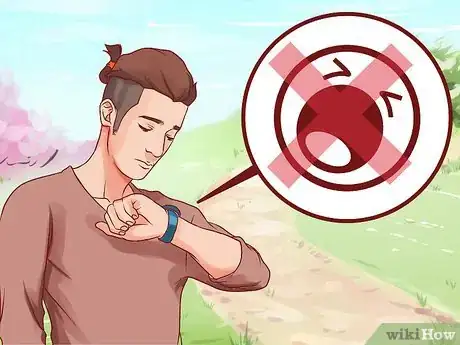
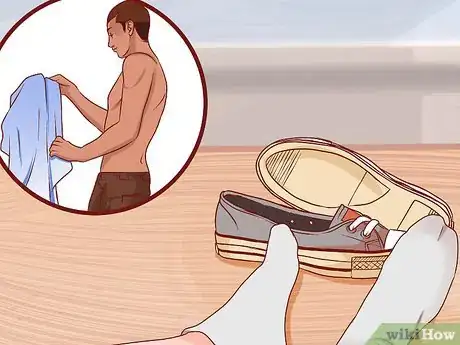
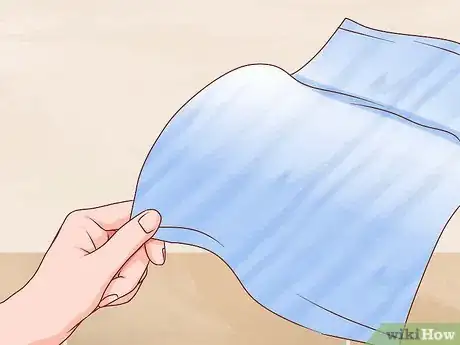

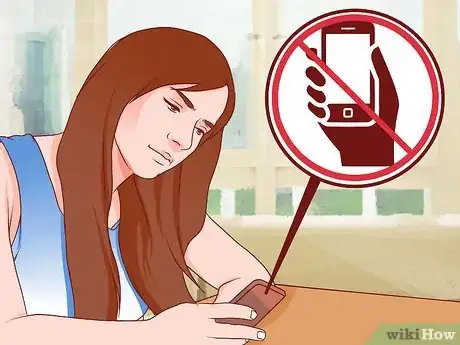
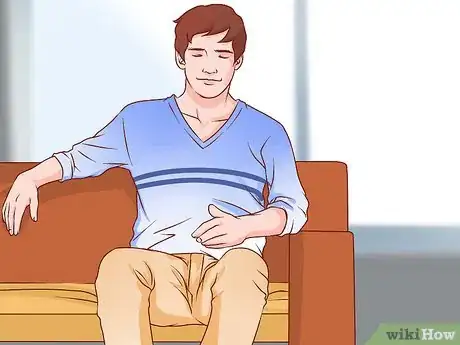

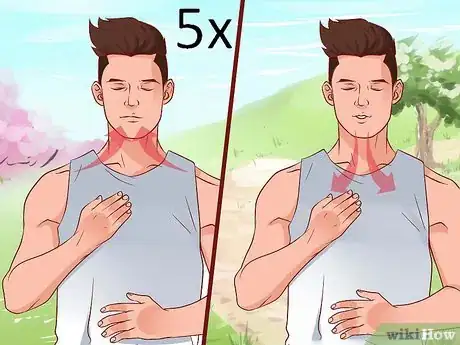


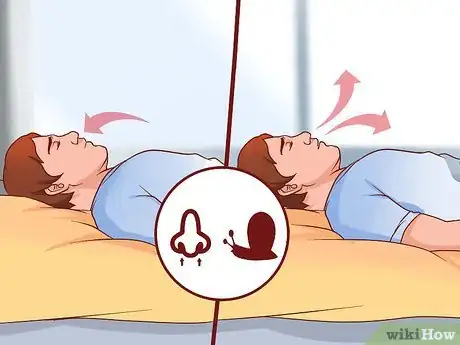

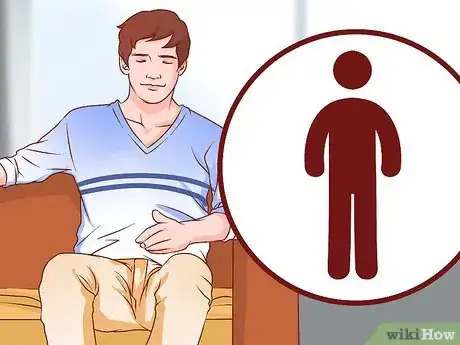
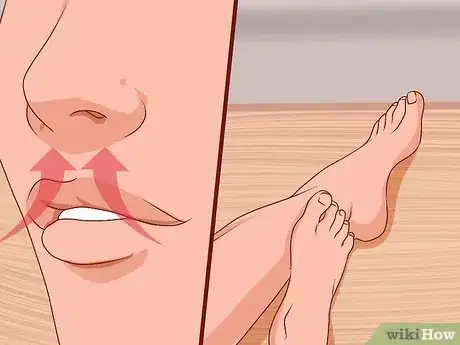
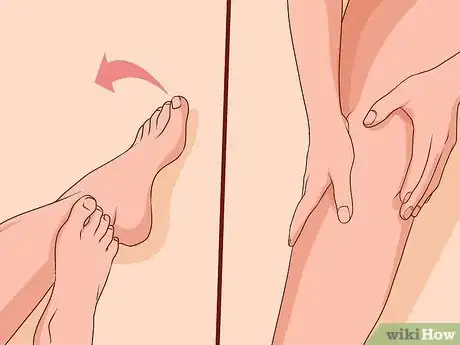
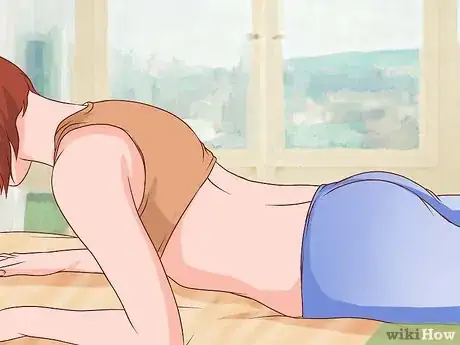
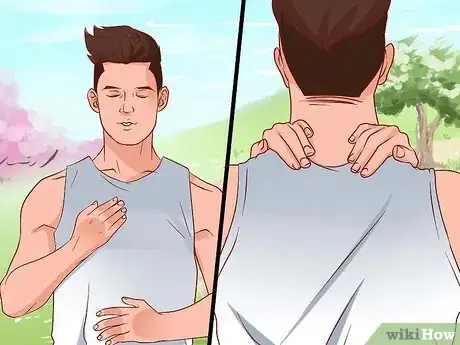
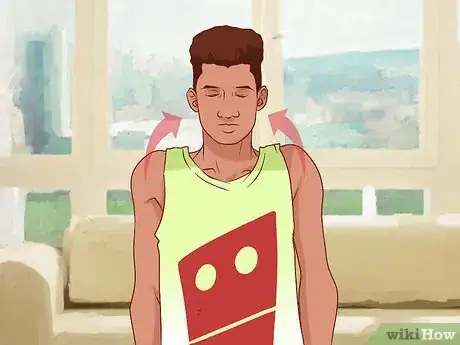


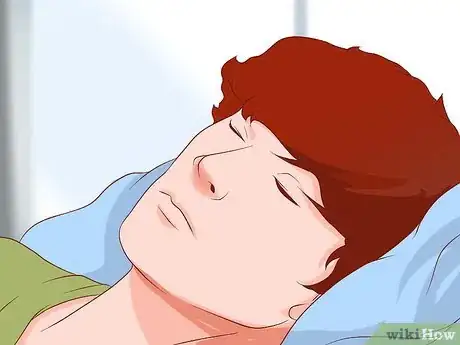
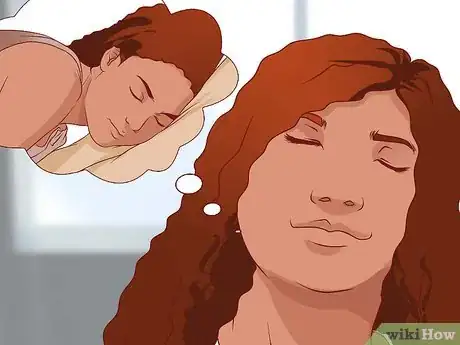
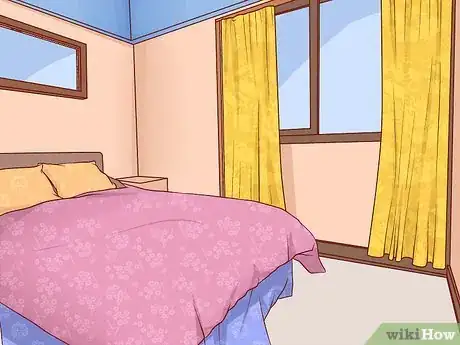
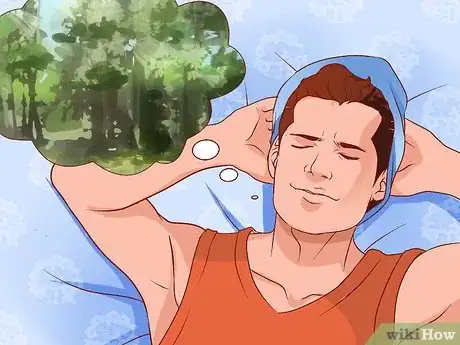
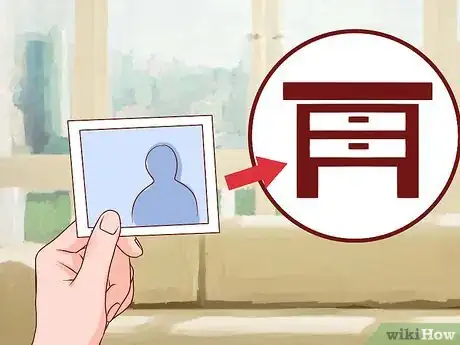
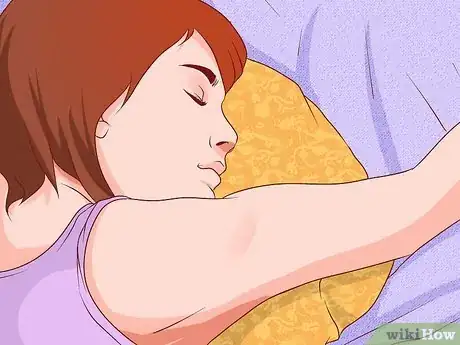

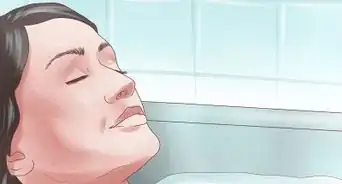
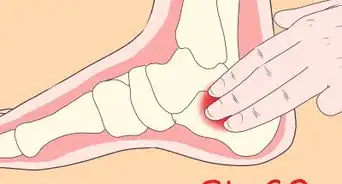
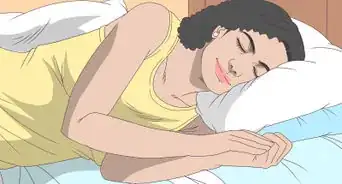
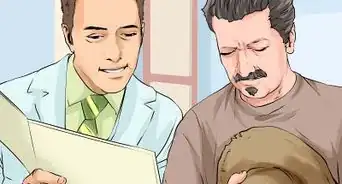

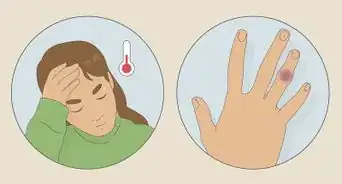

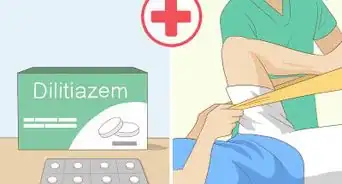

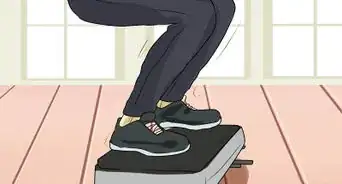

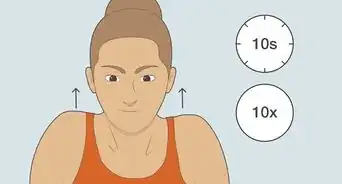










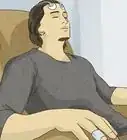

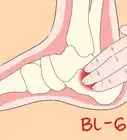




































Medical Disclaimer
The content of this article is not intended to be a substitute for professional medical advice, examination, diagnosis, or treatment. You should always contact your doctor or other qualified healthcare professional before starting, changing, or stopping any kind of health treatment.
Read More...